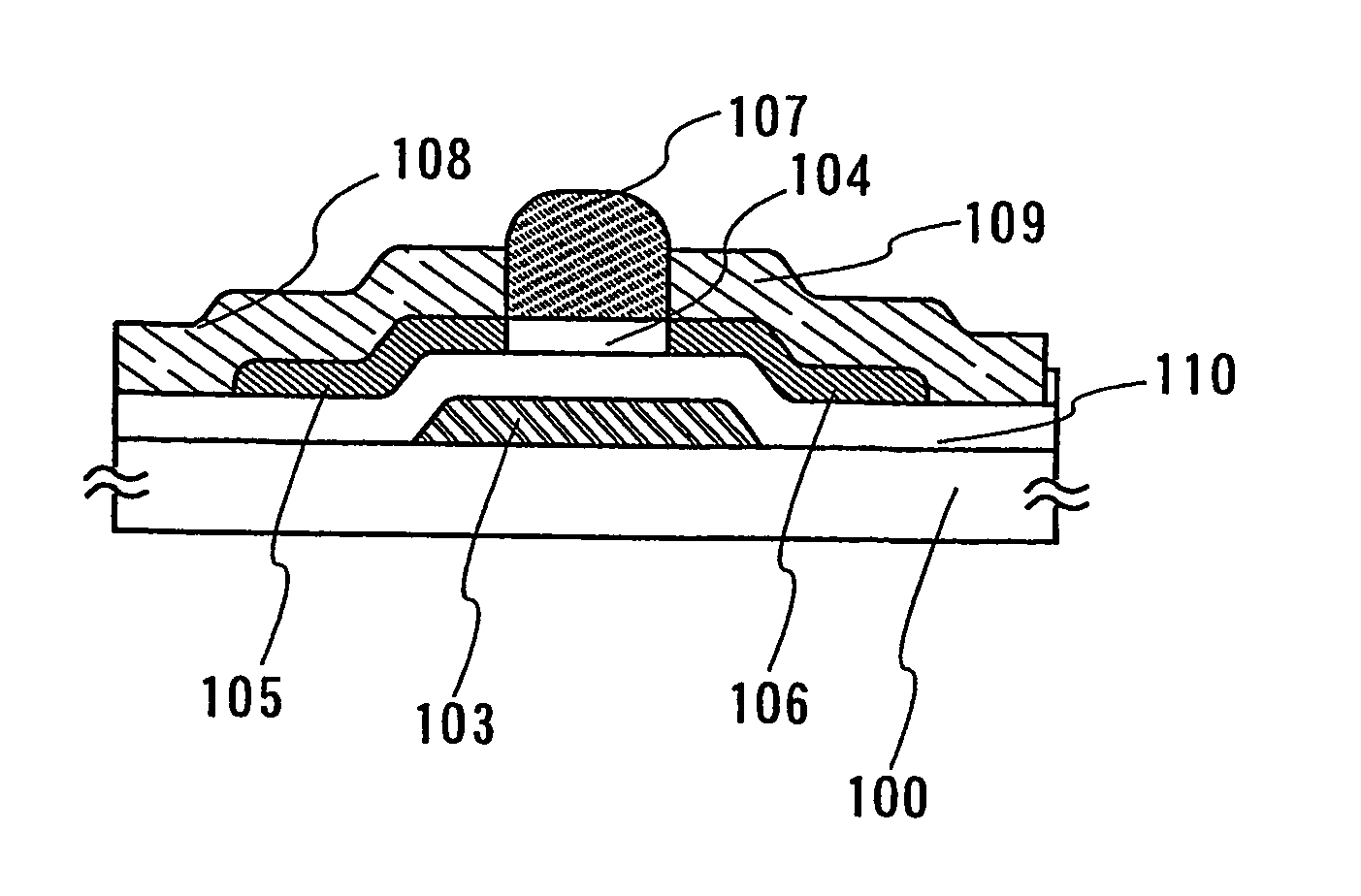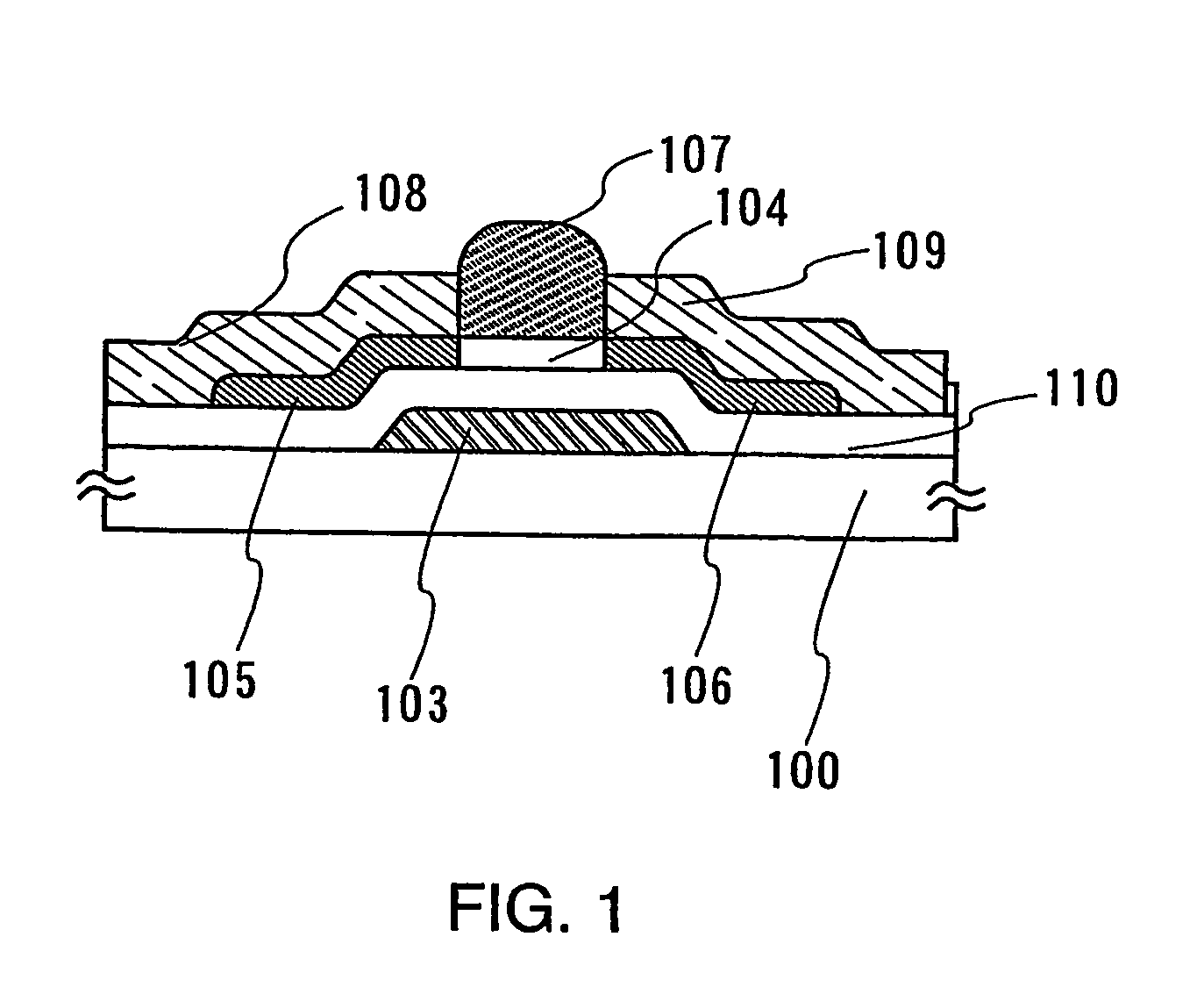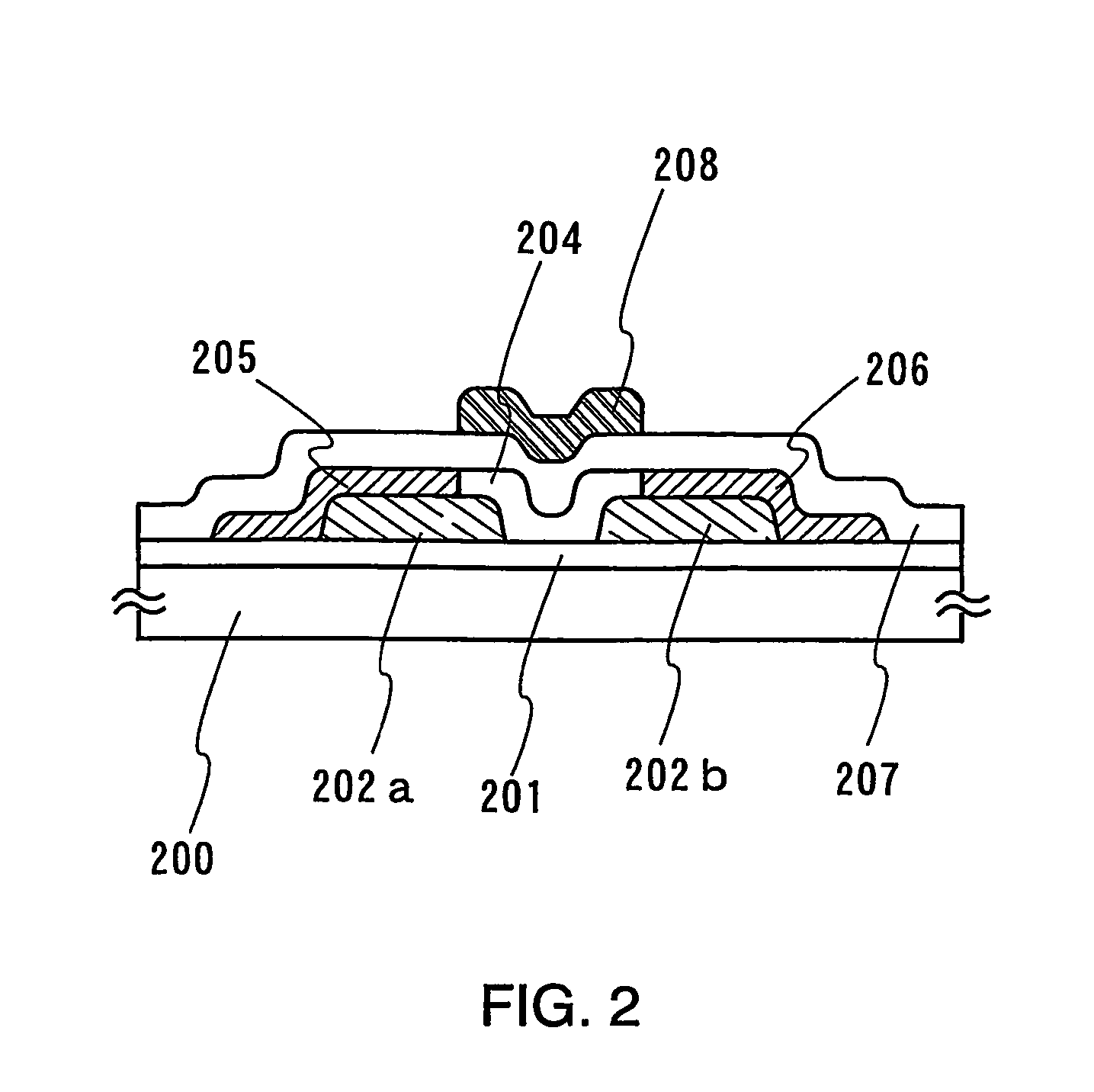Thin film transistor, manufacturing method for thin film transistor and manufacturing method for display device
a manufacturing method and technology of thin film transistor, applied in the direction of semiconductor devices, basic electric elements, electrical equipment, etc., can solve the problems of not making a contribution to a drastic reduction in the number of steps, inevitably increasing the manufacturing cost, and theoretically difficult to expose a large area substrate having a side of more than 1 meter all at once from a technical standpoint, so as to simplify the manufacturing process and reduce the number of steps of the manufacturing process. , the effect of reducing th
- Summary
- Abstract
- Description
- Claims
- Application Information
AI Technical Summary
Benefits of technology
Problems solved by technology
Method used
Image
Examples
embodiment 1
[0044]FIG. 1 is a diagram explaining an embodiment of the present invention and shows a reverse stagger-type (bottom gate-type) TFT. In FIG. 1, 100 denotes a substrate; 103 denotes a gate electrode; 110 denotes a gate insulating film; 104 denotes a channel forming region of a semiconductor layer; 105 denotes a source region; 106 denotes a drain region; 107 denotes a channel protective layer; 108 denotes a source electrode; and 109 denotes a drain electrode.
[0045] Next, a manufacturing process of the reverse stagger-type TFT according to the present invention is explained with reference to FIGS. 3 and 4.
[0046] As for a substrate 300 having an insulating surface, a substrate formed by an insulating substance such as glass, quartz, plastic or alumina, a substrate in which an insulating film of, for example, silicon oxide or silicon nitride is formed on a surface of, for example, a metal such as stainless steel or a semiconductor substrate can be utilized. Further, it is preferable th...
embodiment 2
[0064]FIG. 2 is a diagram explaining a positive stagger-type (top gate-type) TFT according to the present invention. In FIG. 2, 200 denotes a substrate; 201 denotes a base film; 202a denotes a source electrode; 202b denotes a drain electrode; 204 denotes a channel forming region of a semiconductor layer; 205 denotes a source region; 206 denotes a drain region; 207 denotes a gate insulating film; and 208 denotes a gate electrode.
[0065] Next, a manufacturing process of the positive stagger-type TFT is explained with reference to FIGS. 5 and 6.
[0066] A base film 501 is formed on a substrate 500 having an insulating surface. As for the substrate 500, a substrate formed by an insulating substance such as glass, quartz or alumina, a substrate in which an insulating film of, for example, silicon oxide or silicon nitride is formed on a surface of, for example, a metal such as stainless steel or a semiconductor substrate can be utilized. Further, a flexible or non-flexible plastic substrat...
example 1
[0082] In the present Example, a manufacturing process of a reverse stagger-type TFT described in Embodiment 1 is explained with reference to FIGS. 3 and 4.
[0083] A W film having a thickness of 100 nm is formed as an electrically conductive film 302 on a substrate 300 by using a sputtering method (see FIG. 3A).
[0084] Next, in order to subjecting the electrically conductive film 302 to patterning, a mask pattern 303 is formed by a droplet discharging method. The mask pattern 303 is formed by selectively discharging a composition comprising polyimide on an electrically conductive film 302 (see FIG. 3B). The composition comprising polyimide discharged on the electrically conductive film 302 is hardened by being baked at 200° C. for 30 minutes. In the present Example, the mask pattern is formed in a film thickness of 600 nm.
[0085] By using the mask pattern 303, the electrically conductive film 302 is subjected to dry etching while using a mixed gas of Cl2, SF6 and O2 as an etching ga...
PUM
 Login to View More
Login to View More Abstract
Description
Claims
Application Information
 Login to View More
Login to View More - R&D
- Intellectual Property
- Life Sciences
- Materials
- Tech Scout
- Unparalleled Data Quality
- Higher Quality Content
- 60% Fewer Hallucinations
Browse by: Latest US Patents, China's latest patents, Technical Efficacy Thesaurus, Application Domain, Technology Topic, Popular Technical Reports.
© 2025 PatSnap. All rights reserved.Legal|Privacy policy|Modern Slavery Act Transparency Statement|Sitemap|About US| Contact US: help@patsnap.com



